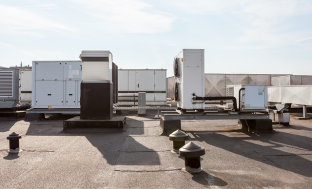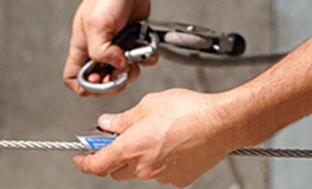latest news
Do you know what PPE you should use with your anchorage devices?
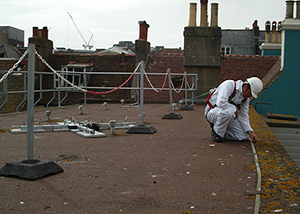
By Chris Paterson, Business Development Manager
Following a warning issued by the *HSE back in 2006, it was advised that retractable type fall devices should not be used on an anchorage point over an edge or horizontal plane. Unfortunately we still come across cases where these arrestors are being used incorrectly.
What is a fall arrest device?
These are often known as retractable fall arrest blocks, inertia blocks, fall arrest devices, inertia reels and fall arresters. Generally, fall arrest devices feature a retractable lifeline made from synthetic fibre, wire rope or webbing (stored in a protective casing) with a self-braking and locking mechanism. In the event of a fall, the brake automatically activates and stops the fall while at the same time reducing the forces imposed on the user.
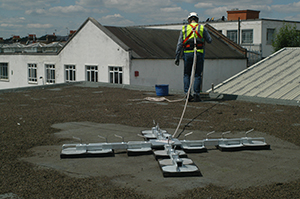
Fall arrest devices are designed to be used where there is limited clearance below the work area and should always be used in accordance with the manufacturer’s recommendations. The devices must also conform to EN 360 which requires a minimum static load of 12kN for wire rope arresters and 15kN for synthetic. The maximum impact force during a fall arrest must be 6kN on both the user and the anchorage point.
Why shouldn’t you use them over an edge or horizontal plane?
Fall arrest devices are designed for use by a single person, preferably with the anchorage point above the user. However it became apparent that these devices were increasingly being used over the edge or horizontal plane which raised some serious safety concerns as they had not be designed or tested for this type of application. This lead to the HSE commissioning research into the misuse of these devices and the potential consequences.
The main issue was that there was as risk of the lifeline snapping or cutting during a fall when it runs over the edge. As the self-braking mechanism is applied it could create a pendulum effect where the lifeline is dragged across the edge. The risk here varies according to the construction and material of both the lifeline and the edge; steel edges will cause greater damage to the lifeline than a concrete edge. Similarly, a stainless steel lifeline will be weaker than a galvanised steel lifeline as it’s dragged over the edge.
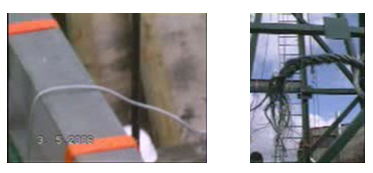
When using fall arrest devices over a horizontal plane you should always consult the manufacturers’ instructions to determine whether the fall arrest block can be used in this situation.
Are you using the correct PPE?
A fall arrest system is specified because there is a serious risk of a fall, so using the wrong PPE will prevent the system from arresting a fall properly. Since the HSE’s warning, new products have been designed which address the concerns of using a systems on the edge or horizontal plane so if you’re unsure whether you are using the correct PPE with your anchorage point, please feel free to contact us for advice.
*The HSE’s warning followed interim findings of a research project which indicated that the block/cable could fail in the event of a fall (https://www.hse.gov.uk/press/2006/e06033.htm)

